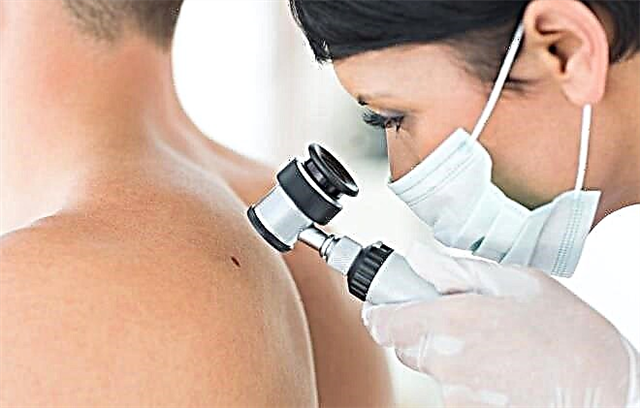Skin cancer treatment in Israel is one of the most demanded areas in medical tourism. This is facilitated by the generally recognized authority of oncologists and dermatologists who are actively involved in the research and development of new methods for diagnosing and fighting cancer. For each patient, an individual therapy protocol is selected here, which is a symbiosis of traditional methods and innovative solutions.

Benefits of Israeli medicine
More and more patients choose treatment in Israel every year. According to the reviews of those who have already used the services of the local health care system, the scheme for admitting foreign citizens is well established. High quality service, comfortable accommodation conditions, attentive staff and Russian-speaking managers - this is what largely influences the decision-making.
But comfort and attention are far from the dominant factors. The main reasons for the popularity of treatment in Israeli clinics are:
- qualified doctors. Great attention is paid to the professional training of future specialists. Upon admission to a medical school, applicants will face a big competition, then a serious dropout during the first year of study, and several more years of practice after graduation under the supervision of experienced mentors;
- the quality of medical services strictly controlled by the state. In addition, both public and private institutions operate in a tough struggle for a foreign patient. According to the international organization Medical Tourism Index, it is Israel that is at the top of the ranking in terms of the quality of medical care;
- Israeli medicine in professional circles has long earned the reputation of the "medicine of the future." A large number of research centers operate here, which are developing new drugs, methods of treatment and diagnostics. If they wish, patients can take part in experimental programs. Medical research results are being introduced here earlier than in many other countries;
- the key task of Israeli doctors is the use of gentle techniques and minimally invasive methods to facilitate the patient's process of getting out of a stressful situation and rehabilitation;
- the prices for the treatment of skin cancer in Israel and other diseases are not much lower than in the USA or Europe, but this direction is more profitable in view of the proximity of territories and focus on the Russian-speaking patient.
- visa-free regime, provided that the stay in the country does not take more than 90 days in one half of the year.
Classification of skin cancer types
Skin cancer can be classified into two groups: melanoma and non-melanoma. In the second type, 2 subgroups are distinguished: squamous cell carcinoma and bezel-cell carcinoma.
Squamous cell carcinoma is formed from keratocyte cells. Pathology develops quickly, on palpation you can find a dense node with horny scales, often accompanied by bleeding. It is customary to distinguish two forms:
- endophytic - develops from a papule, which transforms into a nodule, which begins to bleed over time and affect muscles, tissues, blood vessels, bones and cartilage;
- exophytic (infiltrating form) - also appears from a nodule that rises above the skin and grows overgrown with horn cells, resembling cauliflower.
This type of cancer usually forms in open areas, in most cases on the face.
Basal cell or basalioma refers to half-malignant tumors. In most cases, it is formed in elderly people, most often in women (70-75%). Basalioma develops from hair follicles and epidermal cells. The place of localization is the lower eyelid, the inner corners of the palpebral fissure. It grows slowly, is characterized by no pain, may bleed.
Melanoma arises from melanin (pigment cells). The source of its development are pigmented moles (nevi): papillary, flat, nodular, warty. Melanoma is characterized by high aggressiveness and unpredictability of the clinical course of the disease.
The rarest types of cancer are sarcoma (it accounts for about 0.5% of cases, arises in bone and connective tissue) and adenocarcinoma (develops from sebaceous or sweat cells).
What are the stages of the disease
In the pathological process of the development of cancer cells, it is customary to distinguish 5 stages:
- Zero - the tumor is localized, not spread to other tissues either in depth or in diameter.
- First, cancer cells penetrate into the lower skin layers, the thickness of the tumor reaches 2-4 cm.
- The second - the tumor grows up to 4 cm, but is not characterized by the presence of metastases in the lymph nodes. With timely treatment, the prognosis remains favorable.
- The third - metastases are found in the lymph nodes, the body temperature rises, the tumor significantly increases in size, has a bumpy appearance.
- Fourth, metastases spread to other parts of the body. The patient will have a long and difficult treatment. With melanoma, treatment success is achieved only in 15-17% of cases.

Causes of the disease and its symptoms
The main factors affecting the development of skin cancer include:
- Ultraviolet light, which has a carcinogenic and mutagenic effect on the DNA of cells. At risk are people with Fitzpatrick's first and second skin phototypes (white skin color, red hair (for type 1), freckles).
- Influence of carcinogenic substances: arsenic, paraffin, soot, other chemical compounds that have to be encountered in industrial production.
- Heredity - pathological processes such as basal cell syndrome and xeroderma pigmentosa can provoke the development of cancer.
- Age - most often malignant formations occur in people over 50-55 years old.
Cancer of the skin begins to develop with a small neoplasm that looks like a mole. Its edges are usually torn, the shape is asymmetrical, the color is dark or too light compared to the skin tone, the size is over 6 mm.
Common symptoms include:
- drastic weight loss;
- poor appetite;
- constant feeling of tiredness;
- enlarged lymph nodes;
- temperature 37.2-37.5 degrees;
- pain in the area of the neoplasm;
- the appearance of age spots;
- long-term wound healing;
- the appearance of nodules on the skin.
How is skin cancer diagnosed in Israeli clinics
The cost of treating melanoma of the iris in Israel or any other type of cancer will necessarily include diagnostic procedures. The process begins with a consultation with a dermatologist-oncologist, who determines what research methods should be used to confirm or establish a diagnosis and prescribe treatment.
Skin cancer in Israeli clinics is diagnosed by the following methods:
- dermatoscopy - examination of a neoplasm using a dermatoscope (a device that several times magnifies the image of skin layers). In Israel, digital dermatoscopes are used to display the image on the screen and save the images in order to trace the dynamics of the development of the disease;
- biopsy - morphological analysis of tissues. This is the only method that makes it possible to 100% confirm or deny the diagnosis;
- detailed and general blood test;
- biopsy with cytological examination of sentinel nodes - to control the spread of cancer cells to the lymph nodes;
- sequencing of a new generation - allows you to assess the possibility of using chemical and radiation therapy in the course of treatment;
- a blood test for tumor markers;
- PET-CT.
The latter type of examination is especially important in carcinoma and melanoma due to the possibility of their rapid development and metastasis. Diagnosis usually takes three to six days.
How is the treatment going
The uniqueness of skin cancer is that it can be detected at the earliest stages of development and appropriate treatment can be provided. The method of influencing the disease depends on the stage at which it is detected:
- Surgical operations are applied at an early stage. Not only the tumor itself is removed, but also 0.5 cm of healthy tissue. If the thickness of the neoplasm exceeds 1 mm, 2-3 cm of healthy tissue is removed in order to prevent recurrence.
- An operation called Mohs micrographic surgery. It is used for squamous and basal cell carcinomas when the tumor is located on the face (the area of the nose, eyes, ears, lips). This method is characterized by minimal removal of non-cancerous tissue. The tumor is removed in layers, and the tissue is analyzed immediately under a microscope.
- Treatment of melanoma in Israel, as well as other types of this type of cancer, is carried out with the help of radiation therapy. It is used as an alternative to surgery if surgery is undesirable or impossible.
- Local therapy. The use of creams (chemotherapy and immunostimulating) that are applied directly to the area affected by the cancer.
- TIL-therapy (Tumour-Infiltrating Lymphocytes) is a method based on the use of the patient's lymphocytic cells.
At the first stage, cancer is most often excised or cryodestruction is used (using liquid nitrogen). On the second, if the lymph nodes are affected, they are removed and treatment is prescribed with drugs that can reduce the likelihood of relapse. On the third, they add more radiation, immuno- or chemotherapy.

At the last stage, a complete cure is unlikely, since it is not always possible to remove metastases in the internal organs.
After the operation, plastic surgery of the skin is possible if a significant area of the skin has been damaged.
How to organize your trip
The first step is to choose a clinic or doctor who deals with the treatment of this particular type of cancer. In general, the process can be entrusted to intermediaries who will take on the solution of all issues for an additional fee.
If you are puzzled by the organization yourself, you should adhere to the following scheme:
- Sending documents (medical history, diagnosis, results of examinations). The need to translate papers into Hebrew should be clarified at a medical institution.
- Receiving confirmation and preliminary invoice from the clinic. The need to make an advance payment also needs to be discussed with the clinic.
- Booking tickets and accommodation, if it is not supposed to stay in a hospital, but only treatment in the day department.
A visa permit to enter, if the visit does not exceed 90 days in half a year, will not be required.
How much will the treatment cost?
The cost of treating melanoma in Israel or another type of skin cancer will depend on several factors:
- medical institution and its location;
- the category of the doctor (if a well-known professor deals with the patient, the score may increase);
- the number of diagnostic and therapeutic procedures;
- length of stay in the clinic.
Approximate prices for different types of services are shown in the table (in US dollars, excluding doctor's fees):
| Service | Price |
|---|---|
| Complete diagnostics | 2500-3500 |
| Dermatologist consultation + dermatoscopy | 500-700 |
| Biopsy | 600-2000 |
| Operation (Mohs method) | 4000-7000 |
| Sentinel node biopsy | From 12000 |
| Removal of the tumor at an early stage | From 5000 |
| Chemotherapy (no drugs in one day) | 700-2000 |
Where to go
Many medical institutions are involved in oncology in Israel:
- medical center "Assuta", Tel Aviv. It has dozens of branches, dispensaries and laboratories in different cities. The emphasis is on minimally invasive surgery, targeted and immune therapy.
- Sourasky Medical Center (formerly Top Ichilov Hospital). The oncology department is one of the leading here. Famous for the use of innovative surgical equipment. The center's oncologists have made great strides in the use of radiation therapy. On the basis of the hospital there is a children's clinic in Israel for the treatment of skin cancer and other oncological diseases "Dana".
- Medical center "Rambam". It is considered one of the leading centers for conservative and surgical treatment of oncopathologies. Works closely with the Technion University.
Outcomes
Treating skin cancer in Israel means using the services of well-equipped clinics and professional doctors engaged in extensive research work and applying the results achieved in practice. The leading medical institutions in the country in the treatment of oncology are the Assuta Medical Center, Souraski and the Rambam Hospital.











